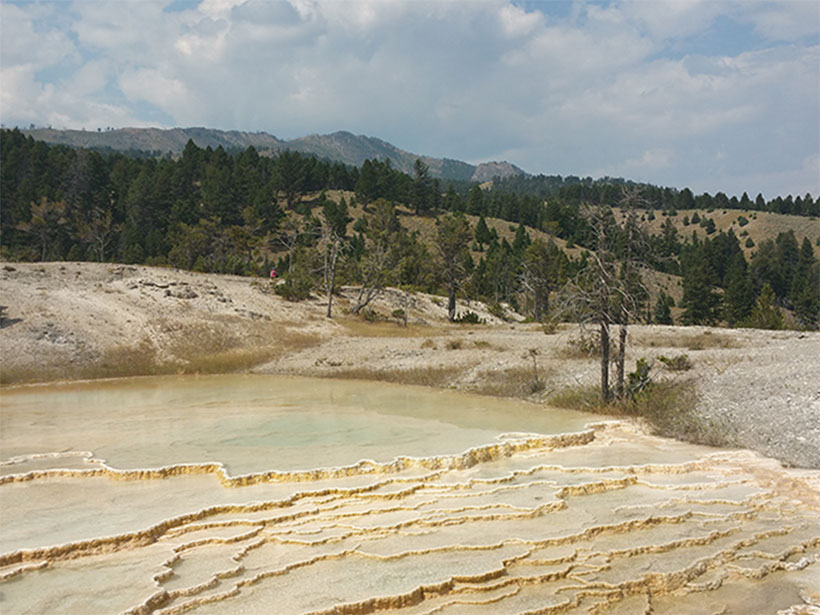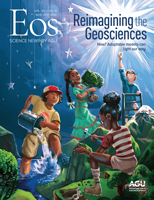The geosciences are not diverse. Discussions attempting to address this lack of diversity often center around voyeuristic accounts of traumatic experiences, which, although accurate, have clearly not caused the needed institutional change for diversity to take root. Rather than relive our trauma, we, as Black geoscientists, want to equip the community with actionable steps to create accepting and supportive spaces for BIPOC (Black, Indigenous, and People of Color) students. Specifically, we’ll address one area in which geoscience institutions have failed underrepresented students: fieldwork safety.
Fieldwork has long been core to the identity of the geoscience community. That impression reigns despite the fact that most geoscience work happens away from the field, in laboratories and offices. Yet fieldwork still underpins geoscience curricula at undergraduate and graduate levels; it is frequently viewed not only as a necessary rite of passage but also as a prerequisite for employment. Geoscientists who lack field experience may be at a competitive disadvantage when applying for jobs or promotions.
For BIPOC students, fieldwork continues to be a barrier. Studies on this topic have shown that some BIPOC students are born and raised in urban areas and may come from families that lack the financial ability to take extended outdoor trips. Therefore, by the time they join their white peers to study geoscience in undergraduate programs, BIPOC students lack equivalent exposure to the types of environments in which fieldwork takes place. These factors make it hard for BIPOC scholars new to the geosciences to fully participate in and enjoy field camp or other field-based research and educational outings.
Once they do begin to participate in fieldwork, BIPOC students often face racism and prejudice in these outdoor spaces. Fieldwork usually happens in remote, nonurban, racially homogeneous places—places that can be dangerous to minoritized students, who may face hostility, distrust, and disrespect.
The Need for a Culture Shift
Negative field experiences are common for BIPOC scholars. One might argue that it is not the job of institutions to protect students from the world, but this mindset can result in the inadvertent exclusion of BIPOC students who feel they must remove themselves from potentially dangerous situations.
A proactive fieldwork strategy would consider protection from racial discrimination and racialized violence with at least the same diligence carried out to protect students from ticks, falls, or snake bites.
An attitude that BIPOC students’ problems are not the research team’s problems also discourages the types of planning that can foster a safe environment for everyone when practicing fieldwork. A proactive strategy would consider protection from racial discrimination and racialized violence with at least the same diligence carried out to protect students from ticks, falls, or snakebites. Many institutions already have good on-campus policies but often do not extend or enforce those policies during activities taking place off campus.
Risk assessment is an integral part of geoscience fieldwork. It is imperative that these assessments include race-related risks associated with field trips. The racism and other forms of discrimination experienced by BIPOC students in the field are exacerbated because these spaces are outside of the campus environment, sometimes in a community of people who may or may not have had prior interactions with minoritized students. The only experience that white people in these communities may sometimes have had with BIPOC students is through the media, where, often, a negative story of the BIPOC community is presented.
For inclusion to take root in the geosciences, institutions must actively listen and take substantive steps to protect BIPOC scholars from harm in the field. On our campuses, white faculty and staff can use their privilege to minimize the chances of racist and other discriminatory actions toward the BIPOC students on their teams. Here are our recommendations:
- Institutions that run field programs should have a mandatory racial risk assessment requirement as part of pretravel protocols. This assessment requires faculty to consider the experiences of their BIPOC students.
- To perform those assessments appropriately, faculty should take antidiscrimination training to help them identify and learn ways to address potential discriminatory attitudes (nonverbal, verbal, and physical threats) that BIPOC students experience in field locations. For example, faculty can create and have plans in place to de-escalate racial tension and protect students from violence.
- Before traveling, faculty should lead collaborative discussions to identify discriminatory or race-related incidents with team members that could occur in the field and then encourage bystander interventions.
- Before field trips, team leaders should reach out to local authorities, businesses, and community leaders, especially in white communities, to provide early notice of the diverse nature of their teams.
- Institutions should identify and share cultural norms, expectations, jargon, policies, and rules practiced in field communities that may be unfamiliar to the fieldwork team.
- Institutions should provide allyship training to educate and empower non-BIPOC members of the team. BIPOC students could be paired with white field allies. These partnerships would help build trust within field parties, as well as help interactions with local communities.
- Team leaders should interrogate and identify blind spots in team members from the majority racial group. Self-awareness of one’s own privilege can be a good impetus to becoming a strong ally.
- Team leaders should be present in the field to introduce all of their team members to the host community and other stakeholders.
- Team leaders should document hostile encounters that team members face during field visits regardless of severity. This accounting is particularly important to address microaggressions faced by BIPOC individuals. Microaggressions, which routinely go unacknowledged or are minimized, wear down morale over time and have adverse impacts on mental health. For students, this impact can lead to their eventual exit from the geosciences.
- Team leaders should address incidents of discrimination when they happen. Team members should practice and use the 5D strategy for bystander interventions: direct, distract, delegate, delay, document. The team should have a plan to exit dangerous scenes or to relocate the field party to a place of safety if other strategies fail.
A Field for All
When students and scholars feel that their experiences and concerns are considered valid, they are more likely to speak with faculty or team leaders as issues arise. This discourse, in turn, fosters a sense of belonging. Without this sense of belonging, BIPOC students and scholars internalize negative experiences and risk further traumas that drive them from the geosciences and STEM (science, technology, engineering, and mathematics) fields in general.
This article centers the experiences of BIPOC in outdoor field spaces, but we must acknowledge that the lack of equity in field access is a much bigger issue in the geosciences.
There has been a growing recognition of the unacceptable state of inequity, lack of diversity, and challenges with the inclusion of people from minoritized groups in the geosciences. This article centers the experiences of BIPOC students in outdoor field spaces, but we must acknowledge that the lack of equity in field access is a much bigger issue in the geosciences. Access to fieldwork and field trips has traditionally been designed for able-bodied, cisgender individuals within the geosciences who have, in Western communities, historically been white men. And globally, able-bodied cisgender men are still the primary group for whom field access is planned. We need the geoscience community to create outdoor experiences that are welcoming to everyone, including people with disabilities, LGBTQ+ people, and women.
Author Information
Joshua Anadu ([email protected]), Oklahoma State University, Stillwater; Hendratta Ali, Fort Hays State University, Hays, Kans.; and Christopher Jackson, Imperial College London.
Citation:
Anadu, J.,Ali, H., and Jackson, C. (2020), Ten steps to protect BIPOC scholars in the field, Eos, 101, https://doi.org/10.1029/2020EO150525. Published on 10 November 2020.
Text © 2020. The authors. CC BY-NC-ND 3.0
Except where otherwise noted, images are subject to copyright. Any reuse without express permission from the copyright owner is prohibited.


